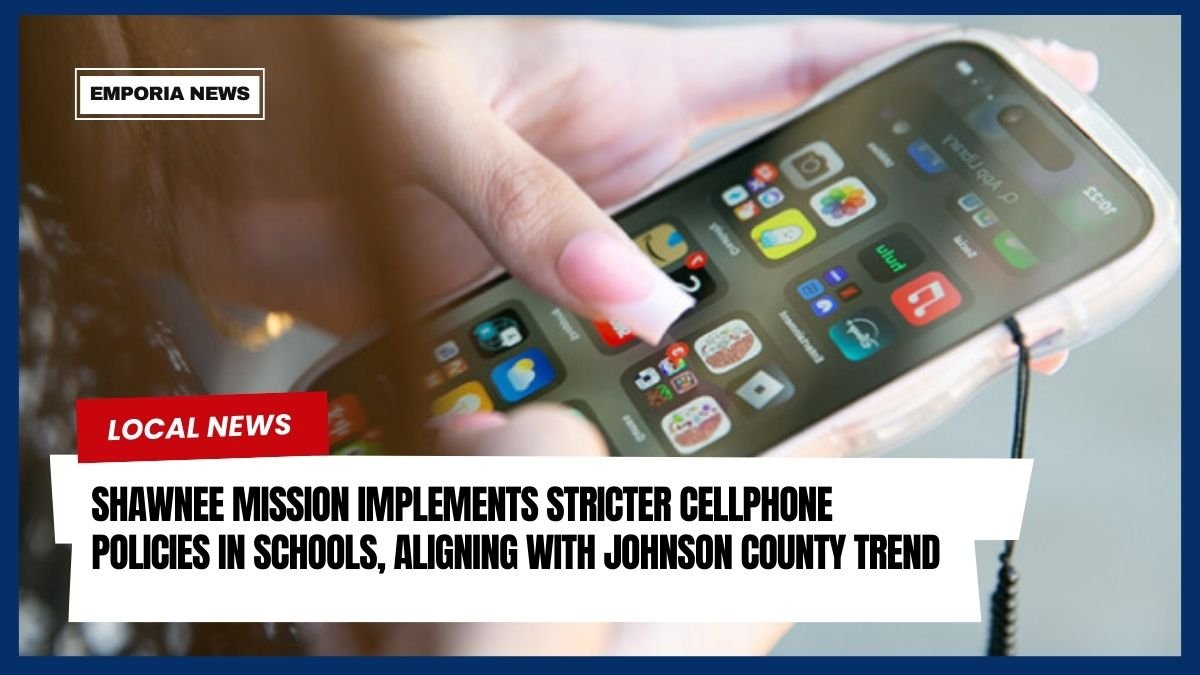The Shawnee Mission School District (SMSD) Board of Education has approved a new cellphone policy aimed at curbing device use during school hours. The decision, finalized during the board’s January 13 meeting, passed with a 7-1 vote.
These updated regulations vary across grade levels and emphasize limiting headphone use and ensuring phones remain stored for most of the day. This decision aligns SMSD with other districts in Johnson County, such as Blue Valley and Olathe, which adopted similar policies earlier.
Key Features of the New Cellphone Rules
Elementary and Middle School Guidelines
- Elementary School: Students must keep all personal electronic devices, including cellphones, in their backpacks throughout the school day.
- Middle School: Cellphones are to remain in lockers for the entire day. Headphones are prohibited unless specifically required for learning purposes.
High School Guidelines
At the high school level, students face more nuanced regulations:
- Allowed Usage: Phones and headphones can be used during passing periods and lunchtime.
- Restricted Times: Devices must be stored during classroom instruction. This approach reflects a compromise after extensive discussion among the district’s Technology Action Team, which could not reach consensus on a one-size-fits-all policy.
Implementation Timeline
The policy includes a three-week grace period, with full enforcement beginning on February 3. Updates have been made to the student handbook, and a communication plan has been established to inform families and staff.
Enforcement and Disciplinary Measures
A tiered disciplinary system will address violations:
- First Offense: Informal conversation between the teacher and student.
- Second Offense: Formal conference involving the student, teacher, and other personnel, followed by an action plan.
- Subsequent Violations: Parent involvement, administrative meetings, and potential detention or additional action plans.
- Continued Offenses: May result in a one- to five-day suspension.
Community Perspectives on the Policy
Teacher and Administrative Feedback
Many educators view the policy as a long-overdue step to reduce classroom disruptions. Superintendent Dr. Michael Schumacher highlighted teacher requests for clearer guidelines, stating, “This policy provides the tools needed to enforce rules effectively.”
Trail Ridge Middle School Principal Matt Engler shared the success of implementing a similar policy in August, noting positive student responses. “Students seem freer without the constant distractions of their devices,” he said.
Parental Concerns
Not all parents are satisfied with the measures. Kim Whitman, a parent and co-founder of the Phone-Free Schools Movement, believes the policy should have been stricter. “I was hoping for a bell-to-bell ban on phones. This policy doesn’t fully address the problem,” she remarked.
Board Member Opinions
Board member Jessica Hembree emphasized the importance of providing teachers with clear standards. “Teachers have been left to create their own rules for too long. It’s time we step up to set consistent guidelines,” she stated.
Comparison to Other Districts
A number of Johnson County school districts have already adopted similar policies. Below is a summary:
| District | Policy Year | Highlights |
|---|---|---|
| Blue Valley | 2023 | Age-based approach; stricter for younger students. |
| Olathe | 2023 | Similar to Shawnee Mission’s tiered policy by grade level. |
| Gardner-Edgerton | 2023 | Focuses on minimizing device use during classroom instruction. |
| De Soto | 2022 | Comprehensive policy revised for further clarity this school year. |
| Spring Hill | 2022 | Policies updated recently to address high school-specific challenges. |
Challenges and Anticipated Impact
The midyear implementation is expected to cause initial adjustments for both students and staff. However, educators like Jason Peres, Principal of Shawnee Mission East High School, are optimistic. “With clear communication and consistent enforcement, this policy will become part of our school culture,” he said.




